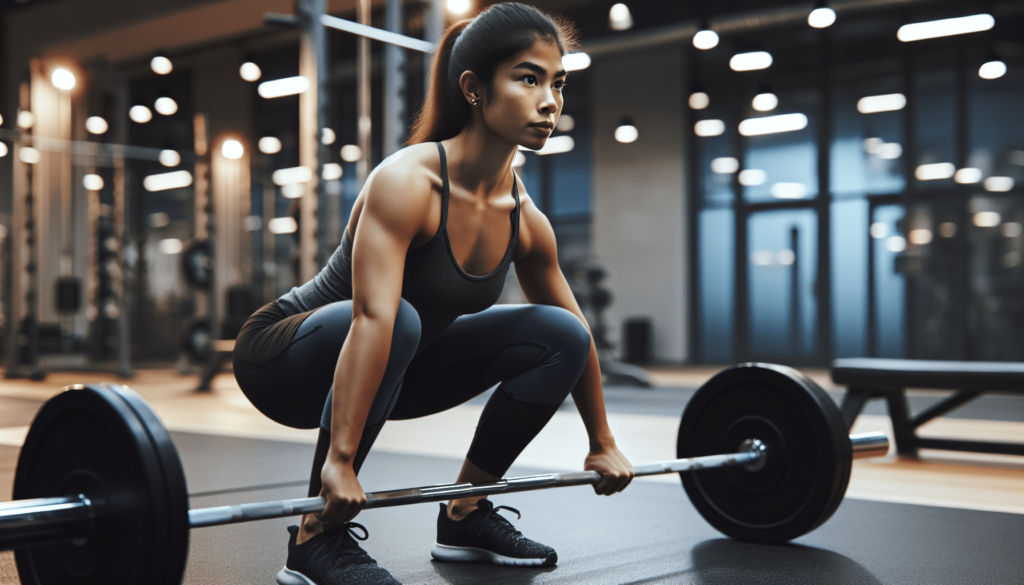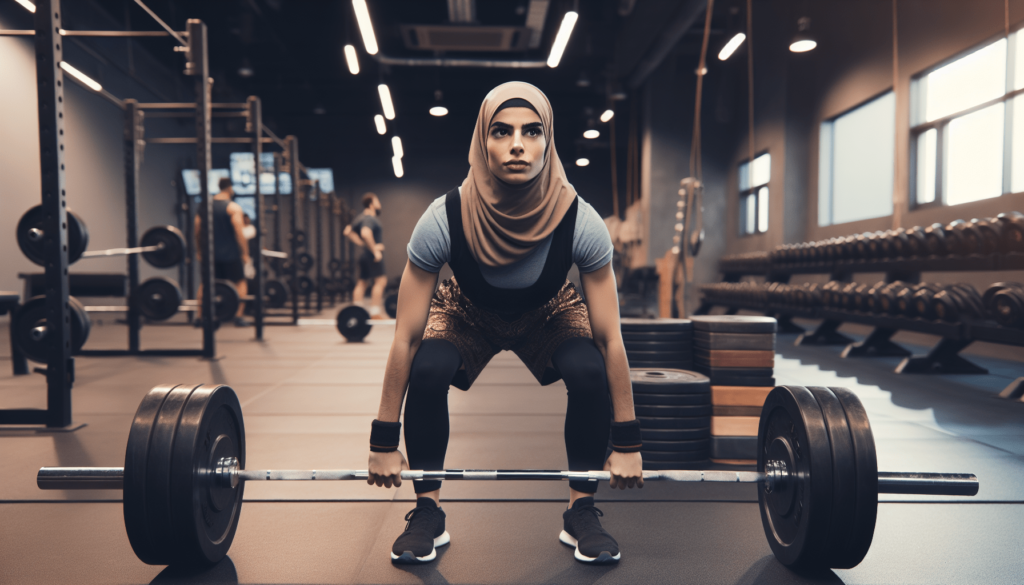Embarking on your fitness journey with exercises like the deadlift can be truly exhilarating! When done correctly, deadlifts are a powerhouse move that strengthen your core, legs, and back while improving your overall body strength. However, it’s vital to ensure you’re performing them safely to avoid any injuries. This guide will take you through step-by-step instructions on how to execute your deadlifts flawlessly, focusing on your stance, grip, and the way you lift, ensuring that you not only feel powerful but also keep your body secure and well-cared for during the process. Have you ever wondered, “How do I do a deadlift safely?” You’re not alone! The deadlift is one of the most effective strength-training exercises, working multiple muscle groups and improving core stability. However, it’s crucial that you perform this powerhouse move correctly to avoid injury and reap the most benefits. Let’s dive deep into the world of deadlifts to ensure you’re getting the most out of your training safely.

What is a Deadlift?
Before you even think about lifting that bar, it’s important to understand what a deadlift is. Essentially, a deadlift is a weight lifting exercise where you lift a loaded barbell or bar off the ground to the level of your hips, then put it down again. This simple yet effective movement involves multiple muscle groups including your glutes, hamstrings, lower back, and core.
Types of Deadlifts
There are several variations of the deadlift, each with its unique benefits and techniques. Understanding these variations can help you select the right one for your fitness goals.
1. Conventional Deadlift
This is the most common form. It involves standing with your feet hip-width apart and lifting the barbell with your arms outside your knees. This type focuses heavily on the posterior chain (backs of your legs and back).
2. Sumo Deadlift
In a sumo deadlift, you’ll adopt a much wider stance and your hands will grip the bar inside your legs. This type is often easier on the lower back and focuses more on the legs and glutes.
3. Romanian Deadlift (RDL)
Unlike the conventional deadlift, you start at a standing position, lowering the bar by moving your hips back, with minimal knee bend. The focus is more on the hamstrings and glutes.
4. Trap Bar Deadlift
Using a trap bar (also called a hex bar) allows for a neutral grip and a slightly different standing position, which can be easier on your lower back.
Benefits of Deadlifting
Understanding the benefits of deadlifting can boost your motivation and commitment to performing it correctly.
- Total Body Workout: Deadlifting engages numerous muscle groups simultaneously, making it a comprehensive strength-building exercise.
- Improved Core Strength: It significantly activates the core, enhancing balance and stability.
- Better Posture: Regular deadlifting can help in improving your posture by strengthening your back muscles.
Safety Precautions for Deadlifting
Ensuring safety while deadlifting is crucial. A wrong move can potentially lead to serious injuries.
Proper Warm-Up
Warming up increases your blood flow and prepares your muscles and joints for the movement. Spend at least 5-10 minutes warming up with dynamic stretches or light cardio.
Example Warm-Up Routine
- 3 minutes of treadmill walking
- Leg swings (10 per leg)
- Arm circles (10 in each direction)
Lift Preparation
The setup of your lift is just as important as the lift itself.
Foot Position
Place your feet hip-width apart. For sumo deadlifts, a wider stance is necessary.
Hand Placement
For conventional deadlifts, your hands should be just outside your legs. Use an overhand grip or an alternate grip (one hand over, one hand under).
Body Alignment
Keep your back straight, chest up, and shoulders back. Your gaze should be forward or slightly downward.
How to Perform a Deadlift: Step-by-Step Guide
Performing a deadlift with proper form is essential for efficacy and safety. Here’s how to do it step-by-step:
1. The Setup
Stand with your feet under the barbell. Bend at the hips and knees, ensuring your shins are close to the bar, but not touching it.
2. The Grip
Lean over without bending your knees further and grip the bar just outside your legs. You can use a hook grip, overhand grip, or a mixed grip.
3. The Lift
Taking a deep breath and holding it, lift the bar by extending your hips and knees simultaneously. Ensure your chest stays lifted and your back straight.
4. The Lockout
Once you pass your knees, thrust your hips forward and lock your hips and knees. Hold this position briefly.
5. The Lower
Lower the bar by bending at the hips and controlling the bar’s descent, keeping it close to your body.
Common Deadlift Mistakes to Avoid
Avoiding common mistakes can greatly reduce your risk of injury and improve your effectiveness in performing deadlifts.
1. Rounding the Back
This mistake puts tremendous pressure on the spine and can lead to injury. Always keep a neutral spine.
2. Jerking the Bar
Lifting the bar in a jerky motion can cause a loss of control and potential injury. Focus on a smooth, controlled movement.
3. Hyperextending the Back at the Top
Avoid leaning back at the top of the lift. This places unnecessary strain on your spine.
4. Moving the Bar Away from the Body
The bar should travel straight up and down, as close to your body as possible, to maintain control and leverage.

Essential Deadlift Accessories
Using accessories can enhance your deadlift experience and safety.
1. Weightlifting Belt
A belt can enhance back support and increase intra-abodial pressure to stabilize the spine during heavy lifts.
2. Barbell Collars
These ensure that the weights stay secure on the bar and don’t shift while lifting, which could cause imbalance and injury.
3. Lifting Shoes or Flat, Sturdy Footwear
Proper footwear provides a stable base for lifting and can help in maintaining balance and proper form.
Deadlift Variations for Beginners
If you’re new to deadlifting, consider starting with these less-intense variations.
1. Kettlebell Deadlifts
Using a kettlebell is a great way to learn the movement pattern of a deadlift with reduced risk, ideal for beginners.
2. Dumbbell Deadlifts
Like kettlebells, dumbbells allow for a more controlled introduction to deadlifting and are easier to handle than a barbell.
Advanced Deadlifting Techniques
As you progress, you might want to enhance your skills and performance with these techniques.
1. Deficit Deadlift
Stand on a raised platform (such as a weight plate) to increase the range of motion, adding an extra challenge.
2. Paused Deadlift
Pause at various points during the lift (such as below the knee) to increase time under tension and improve strength at specific points.
3. Deadlift with Chains/Bands
Adding resistance bands or chains builds explosive power as the weight increases when lifting the bar.
In Conclusion
Mastering how to do a deadlift safely takes patience and practice. Always focus on form before increasing the weight to ensure maximum benefit and minimal risk of injury. Remember, deadlifting is not just about lifting with your back or your arms; it’s about using your entire body. With the right approach, the deadlift can be a rewarding addition to your fitness regimen that significantly enhances your strength and overall physical health. So go ahead, lift smart, stay safe, and see the great results for yourself!
